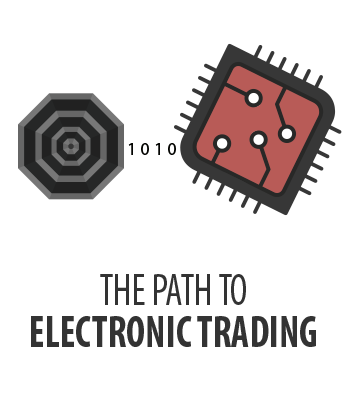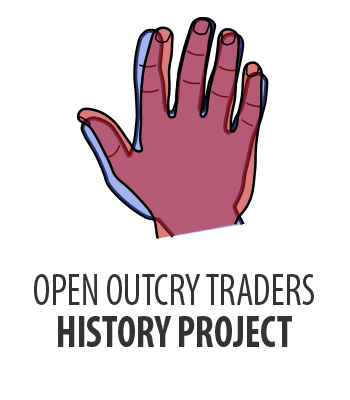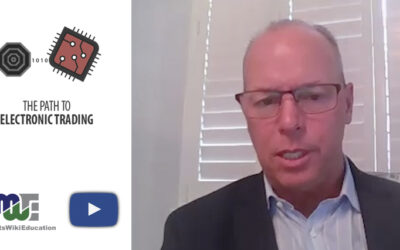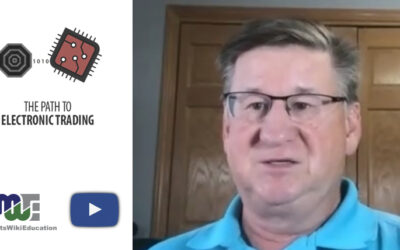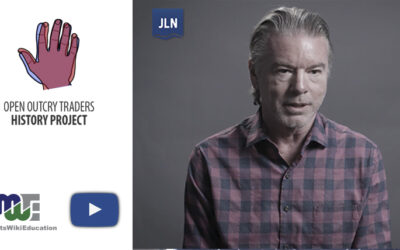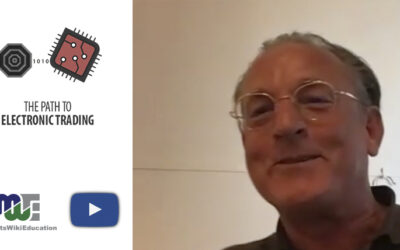R.J. O’Brien CEO Gerry Corcoran spent just one day working on the trading floor, during the drought of the summer of 1988. He was a new CFO for the brokerage firm and it was an all hands on deck day due to a severe drought that was causing huge volatility on the grain floor of the Chicago Board of Trade, where RJO had a lot of farmer hedging business.
What Corcoran saw that day forever impacted RJO and the futures industry. Corcoran was appalled by the anachronistic process by which orders were received on the trading floor, run into the trading pit, reported back to the brokerage’s trading desk (after being recovered on the trash-filled floor of the exchange) and then ultimately reported back to the customers or their brokers.
He saw that if RJO continued to use this process, there was no way it would grow its business, as more trading desk space was hard to come by. Instead, he knew RJO needed to apply some technology to the reporting of fills and ultimately to the orders transmitted to the floor. The futures business of the 1980s had grown so much that the century old proven processes for getting orders into and out of the trading pits needed to be much more efficient.
RJO built one of the earliest electronic order routing systems built exclusively for futures trading. Old line Wall Street firms had been using slow electronic order routing systems already, but those were built mostly for stock trading, and futures were an afterthought. So Corcoran had RJO build their own system they could control and develop.
The moves by RJO and similar ones by other firms such as Lind Waldock encouraged the Chicago Board of Trade and the Chicago Mercantile Exchange to start to build their own order routing systems. Each exchange started a project until the traditional competitors decided to collaborate and build one system that could be deployed on each of their trading floors, as well as on other exchanges too.
The TOPS order routing system was the result. TOPS stood for Trade Order Processing System. RJO connected their system to TOPS and that allowed increased order flow to and from the trading floors.
All these moves from Corcoran, other firms and the exchanges were meant to improve open outcry trading. They were not meant to create electronic trading, but what they essentially did was start the industry down the path to electronic trading.
As firms adopted the TOPS system, the exchanges needed a way to improve the flow of orders spooling up before the dot matrix printers used on the trading floor. The CME developed a device to be mounted on a pedestal in the trading pit called CUBS, for CME Universal Broker Station. The Chicago Board of Trade developed the Electronic Clerk, which used a sturdy hand held computer traders would sling in front of them with a strap around their necks. The CBOT also developed a piece of hardware called COMETS, which were computers stationed on the trading floor desks to quickly transmit orders into the electronic clerk devices.
Besides the pressures from growing business to add efficiency to the trading floor, there were also pressures developing in the 1990s from the success of early electronic exchanges.
Eventually Chicago markets would move to after-hours electronic trading and then side-by-side electronic trading during regular trading hours with both the floor and the electronic trading systems open at the same time. The pressures to move side-by-side came from new electronic competitors to the CBOT like the Cantor Exchange and a consortium called BrokerTec.
The industry remedies that resulted from the FBI scandal that hit the markets in early 1989 also helped move the markets closer to electronic trading. The need for improved audit trails mandated changes that captured price information faster and more accurately after trades occurred.
Ultimately, all these factors – the success of the industry, the technology that improved the efficiency of open outcry, and regulatory inspired data capture – created a path that led to electronic trading.
Gerry Corcoran’s story has inspired us to tell the stories of individuals and firms that blazed the path to electronic trading. Corcoran’s video is the first of this series.
He was inspired by the Open Outcry Traders History Project and wanted to tell the story of his one day of working on the trading floor and the impact it had on the future of R.J. O’Brien and the futures industry at large.
